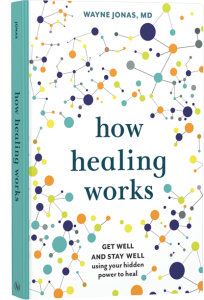Burnout. More and more, I am seeing colleagues, friends, and my patients fraying at the edges. Some are on the edge of burnout and some are already there.
More than a year after COVID-19 first entered our vocabulary, we are still seeing its effects in ways we might not have predicted. Women are leaving the workforce in droves[i], one-fifth of healthcare employees are at risk for post-traumatic stress disorder (PTSD)[ii], life expectancy dropped a full year in just the past year[iii], and mental health challenges are at an all-time high[iv].
What’s unique about this virus in comparison to others is that even those who did not get the virus themselves were impacted due to disruptions in work, school, ability to access health care, and mandated social isolation. What this means is that we ALL need to pay attention to the problem of burnout whether we had the virus or not. Some have found more time to unplug and have a simpler life, others have been thrust into a non-stop work environment and feel unable to unplug.
A Crisis at Work
In 2020, due to the pandemic, 22 million Americans were laid off and only 10 million jobs have returned.[v] Many of those lucky enough to keep their jobs have faced a different problem. The American work ethic and cultural value of hard work is showing an ugly side as workers work endlessly for 15 months on end with no break in sight, now often at multiple part-time jobs. Other countries like Australia have a government-mandated four weeks of vacation for full-time employees[vi]. In the UK, most individuals who work five days a week are provided 28 paid days of leave[vii]. While in America a two-week holiday is accepted as a norm, Americans rarely take more than a week off even if they are qualified to take more. And many are not even taking that right now for fear of losing their jobs, returning to a hefty workload as many people are playing multiple roles in their job, and feeling bad leaving their coworkers to pick up their responsibilities.
The glamorization of overworking needs to stop now.
This notion that strong, resilient people do not need a break feels true, but it is not. The truth is that resilient people take breaks, ask for help, and identify core issues. Sleep, nutrition, stress management, safe social connections, getting away from screens and into nature is more important than ever.
People often frame burnout as a badge of honor. Health care workers who selflessly working long days, 6 days a week. Mothers who do it all and have no time for themselves. Financial and service workers who start work before the sun rises and are the last person who sign off. We all, as a society, need to work every day to fight this.
In my own work, I often have meetings from early in the morning until late at night to accommodate international schedules and because of my great passion and need for this work. It can feel necessary for me to stay logged on and doing this work. But I also need to listen to the voice in my head and the one from my family that says I need to take breaks. I started reserving a 15-minute block at lunchtime to meditate and take a mindful pause. I wrote last month about my efforts to spend more time outside, even if it means taking a call on a walk.
I’ve seen it in my time in the military, my time as a healthcare provider, my work at a foundation, and my personal life. When we do not rest and restore ourselves, we are less productive, more on edge, and can lose touch with meaningful things in life like friends, family, and hobbies that are vital to living a balanced and healthy lifestyle. Regular time away from work makes my work more effective and enhances my mental and physical health. I have come to realize that taking time to “not work” is an essential part of my life’s work.
I recently spoke with Bryant Adibe, MD, after he gave a presentation for the American Medical Association as part of his role as System Vice President and Chief Wellness Officer for Rush University System for Health, an organization that at one time treated 25% of all critically-ill COVID-19 patients in the state of Illinois. Within the tragedy of the pandemic, he worked to help his organization use the time as an opportunity to shine a light on the importance of employee wellbeing for the long haul.
Dr. Adibe noted that a focus on giving employees access to wellness resources and skills is important but it is not the only thing: “Under the surface, many issues we consider to be wellness problems are really unsolved operational challenges. Solving these issues can often be exactly what the team needs to improve their wellbeing.” He shared that a team came to him noting that staff were experiencing some challenges with feelings of burnout.
When he dug deeper, he uncovered that their patient load increased 30 percent in that same week. What the team really needed was to bring in additional staff. Solving those challenges requires employer buy-in and support. Many of these operational issues are due to unrealistic expectations, cultural norms, and chronically understaffed organizations. Within the healthcare industry, this high-pressure style starts in medical school and continues into practice.
Dr. Adibe explained the difference between burnout culture and a wellness culture. Burnout culture is rampant in health care, corporate America, and many other industries. Also, those juggling multiple jobs and roles know that paychecks have decreased due to COVID and also find themselves facing a burnout-style culture of work.
Burnout culture can be linked to workaholism – an addiction to work. According to the VA, “At least 10% of the people in the United States (that is 10 out of every 100 people) suffer from workaholism. This statistic is understandable in a Western culture that often idealizes ‘work hard, play hard’ and ‘rugged individualism.’ Even beyond these cultural beliefs lies the reality of a day-to-day life that may require working 2 or 3 jobs to pay bills or care for family.”[viii]
Culture Check
To see which culture you are a part of, Dr. Adibe recommends exploring the following three questions.[ix] Which of these statements do you agree with for your work?
Question 1:
- I demonstrate my commitment by being available at all hours.
- I demonstrate my commitment by limiting access and prioritizing my recovery time.
Question 2:
- I give everything I have to my job, every day.
- I give my best to my job every day, but also leave something for my family and for myself.
Question 3:
- My work defines my identity.
- My work is only one part of who I am as a person.
Which statements did you check more of: As or Bs?
If you chose mostly A’s, those are an indication of a burnout mindset or culture. Dr. Adibe notes that they are usually stated admirably and as good qualities, but they can lead to the problem of burnout.
Alternately, Dr. Adibe shared that a wellness culture recognizes that when a person is rested and recovered, they can bring the best of themselves to their work every day. It allows for people to do excellent work for the long haul and thrive. Their work is one part of who they are, but there is so much more.
Importance of Meaningful Work
Our feelings on work are important because it can be an element of purpose for many. In the VA’s definition of health, purposeful work falls into the aspects of the power of the mind and personal development.
Kris Wright, LCPC, a behavioral health expert in Washington, DC, noted the importance of meaningful work in life: “For some, it looks like a traditional work role, but it can also be seen in our other roles such as parenting and caregiving.”
Having meaningful work in life can be an important part of self-identity for many. However, it can have negative effects when not put in its proper place.
The increased pressure on workers can lead to crisis-like situations. I recently spoke with an employer who told me about one of his employees who hit a wall last month. The employee was a single mother of two sons who felt compelled to quit the successful career she loved—a choice that would have jeopardized her family’s financial situation and future job opportunities that she had worked hard to achieve. Upon receiving a bad report from her sons’ teachers, she felt unable to ask for help and told her employer that she needed to resign. Fortunately, her employer had a wellness mindset and asked her to reconsider. He offered to help her find options that could allow her to stay employed and take more time for her family.
They immediately gave her two weeks off and helped her to shift her role to something more manageable where she could be both the provider and parent she needed to be. Her boss asked her to let them know the next time she was feeling overwhelmed and give them a chance to help. Not all companies are this understanding, but it is important that we create cultures wherein asking for help before a crisis arises is the norm. We need to destigmatize asking for help. We all have a role in that.
My article, 5 steps to avoid burnout at work, is a guide to act as a starting point:
The first step is knowing what burnout looks like:
- Behavioral signs: poor sleep, apathy, feeling isolated, being overly reactive, or tearful.
- Emotional signs: constant anxiety, fear, sadness, and irritability or anger.
- Cognitive signs: difficulty concentrating and over-analysis of events.
- Physical signs: pain and fatigue
Additionally, Dr. Adibe recommends:
- Focusing on what is within your sphere of influence or control
- Lightening up at work by bringing joy into work, having personal connections, tying work into your “why” or purpose, playing music, checking in with people, collegiality, and warmth
- Integrating wellness into existing structures rather than being just another thing to do
It is ok and healthy to show vulnerability, to access the resources and support your needs, and to try to unplug. Pushing yourself or your team past the point of exhaustion will only decrease creativity and effectiveness. Learn more: https://healingworksfoundation.org/five-steps-to-avoid-burnout-at-work/
Now that vaccination is a possibility, not only is it time for us to disconnect from work and unwind, but it’s also a chance to rethink our relationship with work and create a wellness culture.
[i] Matuson, Roberta. How to Stop the Mass Exodus of Women Leaving the Work Force, Healio, 1 Mar. 2021, www.forbes.com/sites/robertamatuson/2021/03/01/how-to-stop-the-mass-exodus-of-women-leaving-the-workforce-due-to-covid-19.
[ii] Rodriguez, Robert, et al. Symptoms of Anxiety, Burnout, and PTSD and the Mitigation Effect of Serologic Testing in Emergency Department Personnel During the COVID-19 Pandemic Annals or Emergency Medicine Feb 4, 2021. https://www.annemergmed.com/article/S0196-0644(21)00108-6/fulltext
[iii] Miller, Janel. “CDC: US Life Expectancy Drops 1 Year during Pandemic.” Www.Healio.com, Healio, 18 Feb. 2021, www.healio.com/news/primary-care/20210218/cdc-us-life-expectancy-drops-1-year-during-pandemic.
[iv] Spotlight 2021 – Covid-19 and Mental Health: A Growing Crisis, Mental Health America, 20 Oct. 2020, https://mhanational.org/research-reports/covid-19-and-mental-health-growing-crisis.
[v] Johnson Hess, Abigail. The U.S. Still Has 10 Million Fewer Jobs Now than before the Pandemic, CNBC, 8 Dec. 2020, www.cnbc.com/2020/12/08/the-us-has-10-million-fewer-jobs-now-than-before-the-pandemic.html.
[vi] Staff. Annual Leave and the NES Fact Sheet, Https://Www.fairwork.gov.au, www.fairwork.gov.au/tools-and-resources/fact-sheets/minimum-workplace-entitlements/annual-leave.
[vii] Staff. Holiday Entitlement Rights, Www.gov.uk, www.gov.uk/holiday-entitlement-rights.
[viii] Veterans Health Affairs: Whole Health Program: https://www.va.gov/WHOLEHEALTH/veteran-handouts/docs/Workaholism_Final508_07-25-2019.pdf
[ix] Bryant Adibe, MD, Feb 2021- AMA presentation.
 Take Your Health Into Your Own Hands
Take Your Health Into Your Own Hands
Drawing on 40 years of research and patient care, Dr. Wayne Jonas explains how 80 percent of healing occurs organically and how to activate the healing process.

